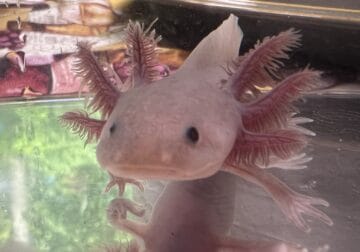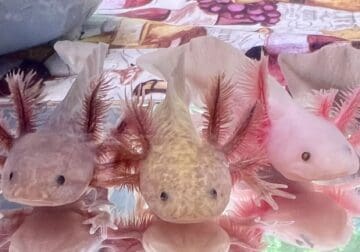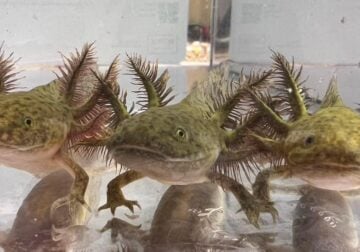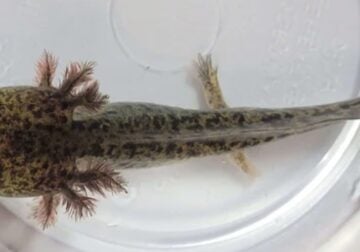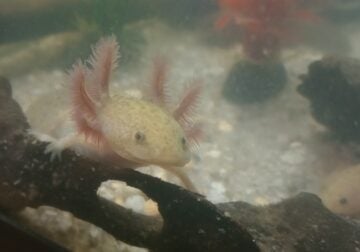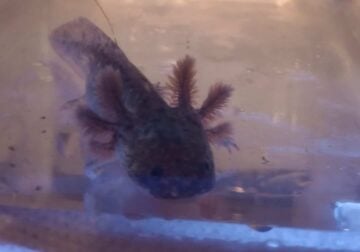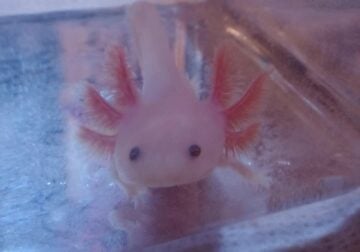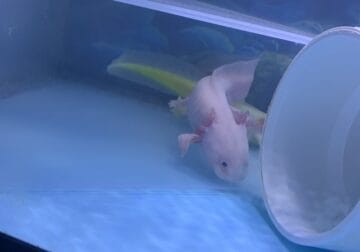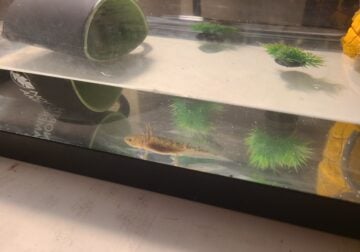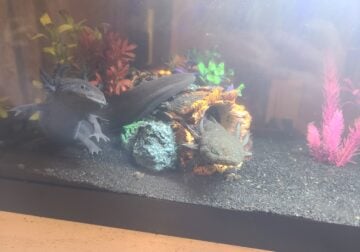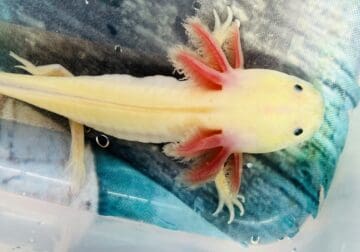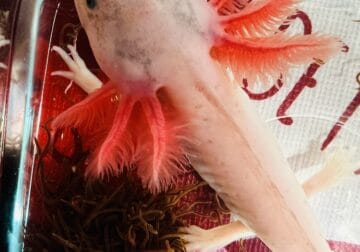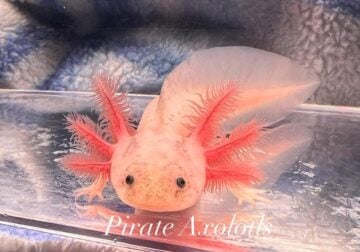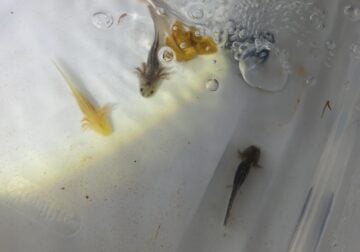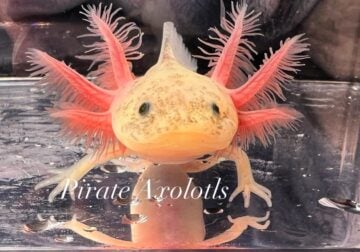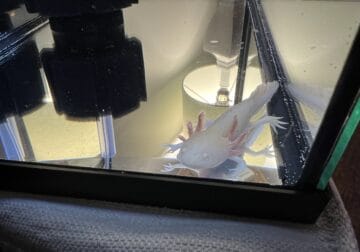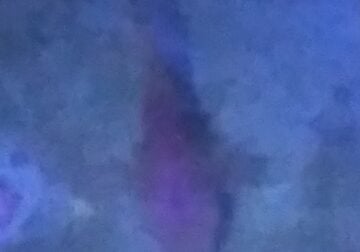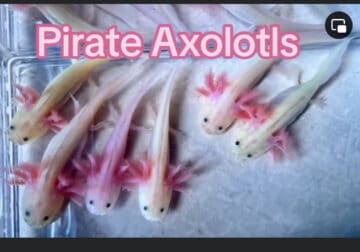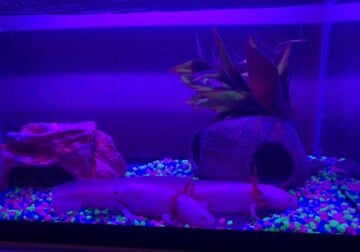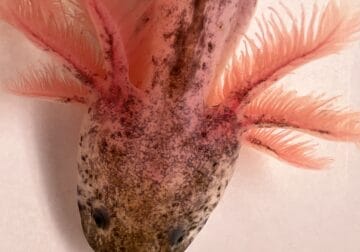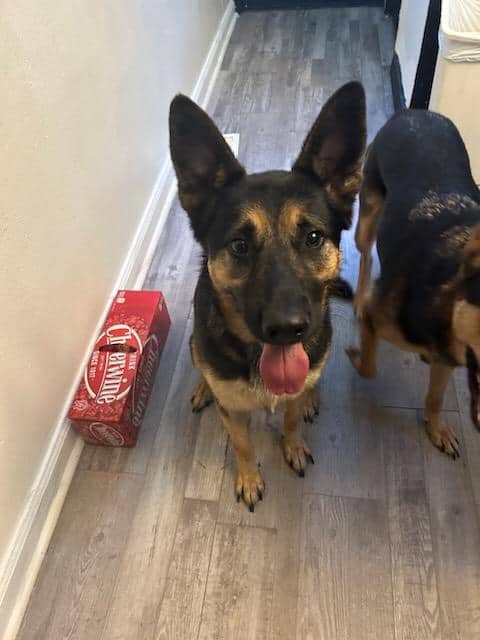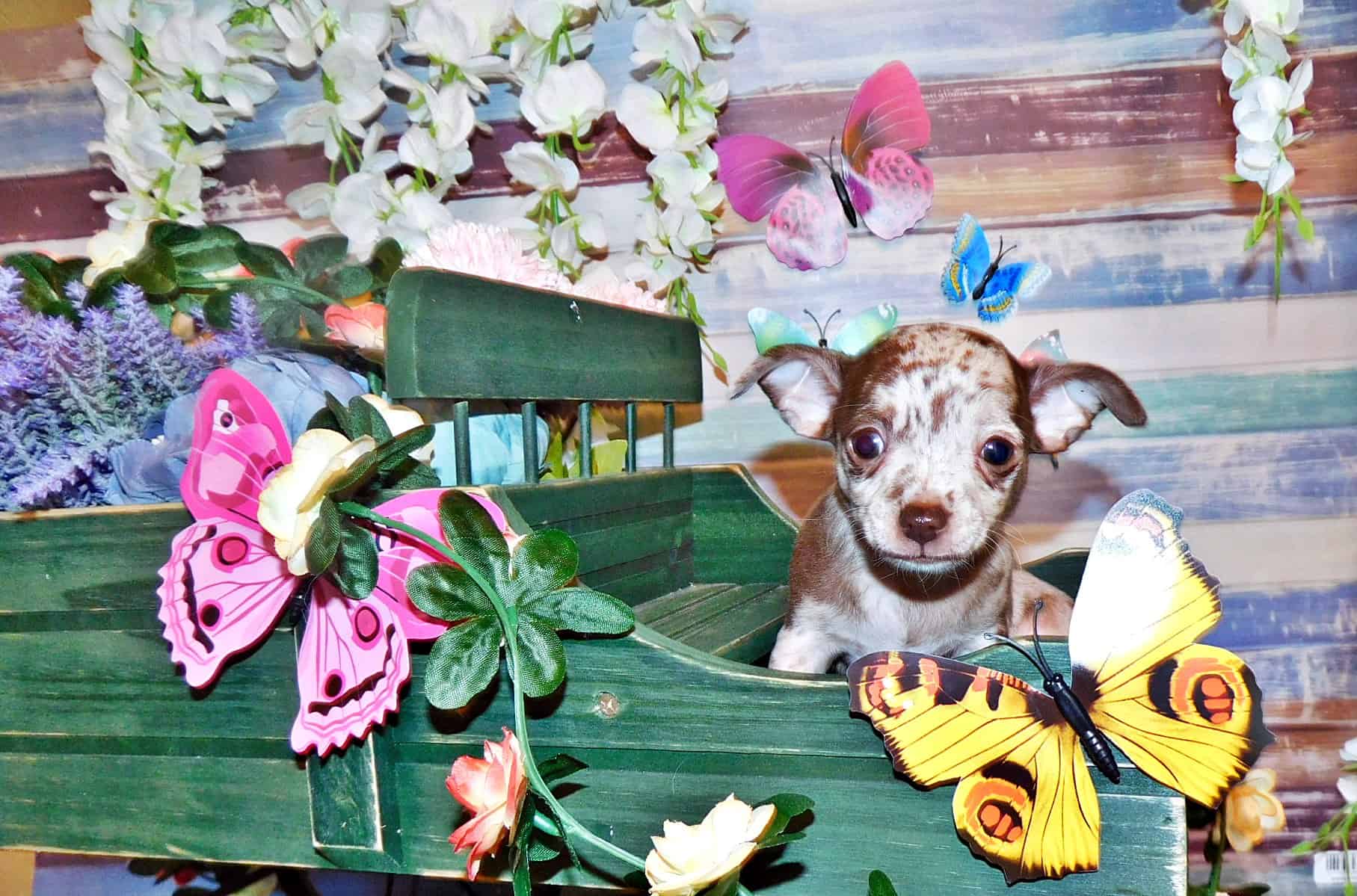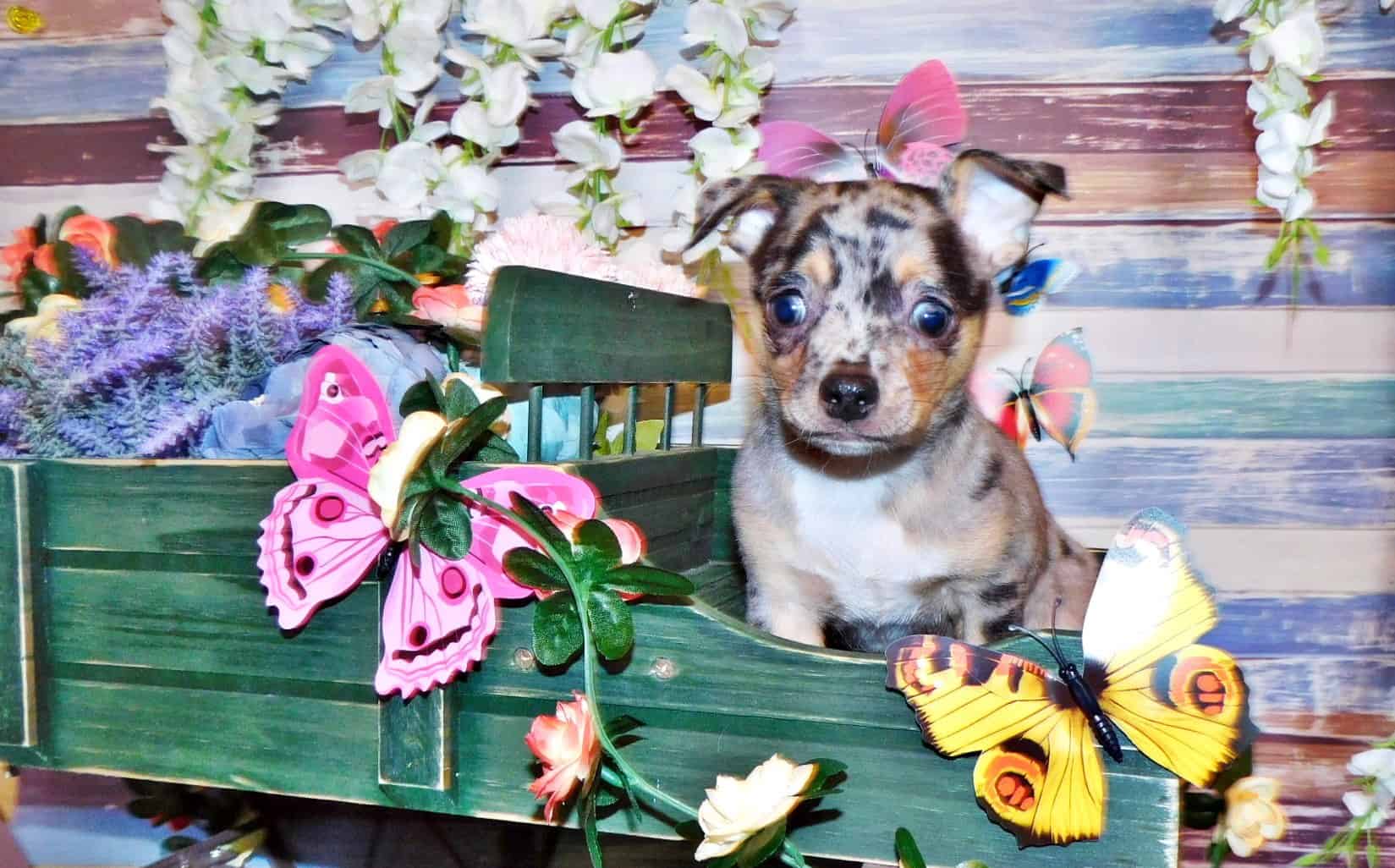Axolotl for Sale: Amphibian or Walking Fish?

There is a wide variety of choices when it comes to aquarium pets. While you may be used to fish, one unusual animal that spends its entire life in water is more closely related to a frog. With its decorative frilly gills and friendly and comical expression, axolotls are attractive alternatives for people who need a quiet and unassuming indoor pet that they do not need to touch.
Overview of Axolotl for Sale
What Is an Axolotl?
Even though it usually lives in water its entire life, the axolotl is a type of amphibian. Its closest living relative is the tiger salamander. Axolotls have almost disappeared from their native habitat in the still-water lakes around Mexico City. Lake Xochimilco is the only remaining body of water left that is suitable for axolotls, and it is under stress from suburban sprawl and the introduction of large, predatory fish (i.e., carp and perch). Nevertheless, axolotls enjoy exponential popularity as pets.
Physical Characteristics
A large part of the axolotl’s charm is its expressive face. It has a prominent mouth that often seems to smile and a large head. Axolotls appear toothless, adding to their appeal. Their eyes are round and dark with a yellow iris that appears as a narrow ring around the pupil. The axolotl’s signature feature is the fringe of feathery gills on stalks on either side of its face. Its body is flat and has spindly legs with long “fingers” that help it walk on lake bottoms. Axolotls are marvels of science with the ability to regenerate their limbs, spines, jaws, and organs like their heart, brain, and lungs. As an adult, the axolotl ranges from nine to 18 inches long and weighs up to 300 grams (about 10 to 11 ounces). Pet axolotls are nearly always between nine and twelve inches long.
Colors
Wild axolotls are dark gray green with olive mottling and a cream-colored underbelly. They may have a silvery hue. Domesticated axolotls can come in this same grayish-green color (wild type). Some have an abundance of iridophores which enhance their iridescence. There are also many color mutations that have been cultivated in the pet trade.
- Silver dalmatian – lavender or pale gray mottled with darker gray
- Albino – white with pink eyes
- Copper – copper or olive with pink eyes and specks of brown and olive
- GFP axolotl – axolotl with green fluorescent protein that makes their head
- Melanoid black (blue axolotl for sale) – black or charcoal with gray or dark purple gills
- Chimera axolotl – two cells of an embryo fuse retaining a split in the center; the result is, simplistically speaking, the fusion of two halves of a different axolotl (commonly, one side is black and the other is white)
- Leucistic (Lucy) – partial albinism like a Siamese cat; has dark spots in localized areas of a mostly white body; dirty leucistic describes a darker leucistic axolotl; leucistic animals retain dark eyes
- Enigma – start black and lighten to mottled green and yellow
- Golden (golden albino) – marked by a gold body with self-colored or pink gills and pink or transparent eyes; often quite iridescent
- Piebald – like a dirty Lucy, but the dark spots and speckles are much denser and spread throughout the body
- Firefly – rarest morph and lab-created; body and tail are different contrasting colors (tail can be white and the body black or vice versa); sometimes GFP gene is introduced, and the tail glows, hence the name
- Mosaic axolotl – a fusion of DNA from both parents in one cell; creates a unique pattern of intermixed colors, usually a combination of melanistic (black) and leucistic (white)
There is no such thing as a natural blue axolotl for sale. However, a couple of colors are described as near blue because of their appearance. Silver dalmatian axolotls with their lavender intonations are the closest an axolotl comes to blue. Melanoid black axolotls go by the name blue because their iridescence makes them appear navy in the right lighting. Another phenomenon is the chimera axolotl. It rarely survives to adulthood because the two halves often grow independently of each other. Chimeras that live to adulthood can have a plethora of health problems. Mosaic axolotls seem like chimeras but merge DNA rather than share an embryo. Both chimeras and mosaics are accidental and rare.
Axolotl for Sale Near Me
One of the biggest challenges to your search for an exotic salamander is a guarantee to get a live axolotl for sale. A local axolotl has the advantage of not having to suffer the stress of shipping. Axolotls have demanding environmental requirements and may perish from something as minor as a change of a few degrees in their water temperature. Some people like the idea of raising axolotls from hatchlings, and occasionally you can buy axolotl eggs. However, the eggs end up being even more time-intensive than the adults. Moreover, you need the proper setup because you will have several axolotls and need to account for different growth rates. Moreover, adult axolotls sometimes cannot be housed together. If possible, try to visit a potential axolotl before buying one. You should use several criteria to choose a healthy one.
- Expanded, fluffy-looking gills – gills folded forward is a sign of illness
- Muscular tail
- Strong neck
- Should not see ribs
- Consistent skin tone and color pattern
- Is it legal in your locale?
Axolotls can make amazing exotic pets but remember that they are critically endangered. While an axolotl pet for sale is legal in most places, wild-caught animals contribute to the devastation of species and ecosystems. Laws may differ in regions that are near the axolotl’s natural habitat.
Health
Like any exotic animal, the biggest threat to an axolotl’s health is stress. Poor husbandry practices account for the most common stressors for amphibians.
- Poor water quality – unsanitary, insufficient filtration
- High water flow – axolotls prefer still water
- No grip on the bottom of the tank
- Tank not large enough
- Poor or inappropriate diet
- Water too warm or too acidic
- Ammonia levels or other elements in the water are too high
Axolotls can live for 15 to 17 years with excellent care. They can suffer from the following health challenges:
- Bowel impaction – using a gravel substrate is a major cause; use fine sand, large rocks (must be larger than amphibian’s head), or a combination of these two; or go with a bare bottom
- Involuntary floating – caused by excess air gulping (often from filter’s air bubbles), rotting food in the substrate, indigestion (from overeating), overheating, or bowel impaction
- Amputations – injuries are frequent among unevenly sized axolotls that will feed on anything smaller than themselves; you should separate the animals if one becomes injured; regeneration will occur in the absence of infection
- Intestinal parasites – ingest in their food or an infected aquarium mate
- Fluid retention – can be genetic but more often involves a tumor or heart, kidney, or liver failure
- Bacterial infections – if the water is off in pH, temperature, hardness, sanitation, or damaging compounds, your axolotl will become susceptible to bacterial infections which will cause disease or delay healing
- Red legs syndrome – animal can show other signs of this life-threatening bacterial infection other than red legs (spontaneous bleeding from skin and eyes, red spots, weight loss); highly contagious
Important preventative measures are a proper diet and feeding schedule, clean water, the appropriate substrate, and tight water conditions. Also, avoid stressing your axolotl and isolate any animals or plants you plan to introduce to the environment. Acquire your pet’s food from reputable sources. Although some owners engage in fridging (place animal in cold water bath in the refrigerator to incite hibernation) and saltwater bathing, you should consult with your veterinarian before performing any medical procedures. You can increase your amphibian’s stress levels, and many medical treatments are designed for fish.
Care of Axolotl for Sale
Axolotls, except in rare cases, do not metamorphose into adulthood like other amphibians. They retain gills, and you do not have to provide an environment that combines terrestrial and aquatic elements.
Habitat
An aquarium provides the appropriate housing for an axolotl. You can leave it bare on the bottom. However, axolotls are happier if they can move along the bottom of the tank. A sand substrate will provide your axolotl with the grip and security it needs to walk, dig, and play. It is also comprised of tiny particles if your pet accidentally ingests some. Ideally, you should provide a 20-gallon tank for an axolotl. Plants and other fixtures like caves are great to provide your axolotl hiding places. In the wild, they like to hide from predators during the day and feed at night. Axolotls do best with indirect lighting. If you have live plants, you can use LED lights specific for vegetation and adjust the brightness as needed. Plants not only provide shelter for axolotls but slow down water currents. Although axolotls need heavy filtration, they also cannot thrive when the water flow in their tanks is too strong.
Water
Water is the most crucial aspect of your axolotl’s environment. Your axolotl is particularly sensitive to the temperature and pH levels of the water it lives in. Keep the water between 60 and 70 degrees Fahrenheit and at a pH level of 6.5 to 8.0. You can talk with your breeder, and keep your newly purchased axolotl at the same pH that it grew up in. You need a thermometer, pH strips, and a heater. As you will notice, axolotls are cold-water amphibians, and thus, the heater is to keep the water temperature stable rather than to provide much extra warmth. In addition to maintaining temperature and acidity levels within narrow parameters, you must use water that is free of chloramines, ammonia, nitrites, and nitrates. The water hardness, reflecting calcium and magnesium levels, should be between 0.7 and 1.4 dGH (12.5 to 25 ppm). You should have a water testing kit so you can test levels of all compounds at least monthly.
Cleaning
Cleaning your axolotl’s aquarium is like cleaning a fish tank. Empty 20% to 30% of the water and replace it weekly. You should also scrape away algae and vacuum the bottom if you have substrate. This will remove discarded or dropped food and waste material. When you clean your axolotl’s tank is also a great time to test the water.
Companionship
Axolotls are solitary animals except during breeding. They do not require an aquarium mate. If you do keep two axolotls together, add an additional 10 gallons to the tank size and make sure the animals are within two inches of each other. If not, the larger axolotl will invariably hunt and nibble on the smaller one. Some individuals are more aggressive than others and can be a source of significant stress for their tank mates. As for yourself, you should not handle your axolotl unless it is an emergency. Their bones are nonweightbearing and thus extremely fragile. Additionally, their skin is very permeable. This does not even account for the stress you will cause. Axolotls appear to enjoy interacting with people via mutual observation through the glass of their tanks.
Feeding
Axolotls look toothless, but they have underdeveloped teeth. They feed by vacuuming prey into their mouths, explaining the importance of the correct substrate size. Some people avoid the ingestion of foreign materials by feeding their axolotl from a food –loaded bowl that they carefully place at the bottom of the aquarium. Axolotls are strictly carnivorous and should eat worms (earth, blood, or white), shrimp, and Daphnia. Axolotls will eat food that is dead or alive, but moving prey provides some exercise. Some experts are proponents of variable diets while a study suggests a specialized diet of a high-quality protein is most beneficial. However, changing up your axolotl’s diet has long been promoted to cover nutritional gaps. Consult with an exotic specialist about any doubts. Adult axolotls should only be fed every two to three days to avoid impactions from overeating. They generally should eat as much as they want in a two- or three-minute window. You would then remove the remainder. Juveniles should eat daily.
